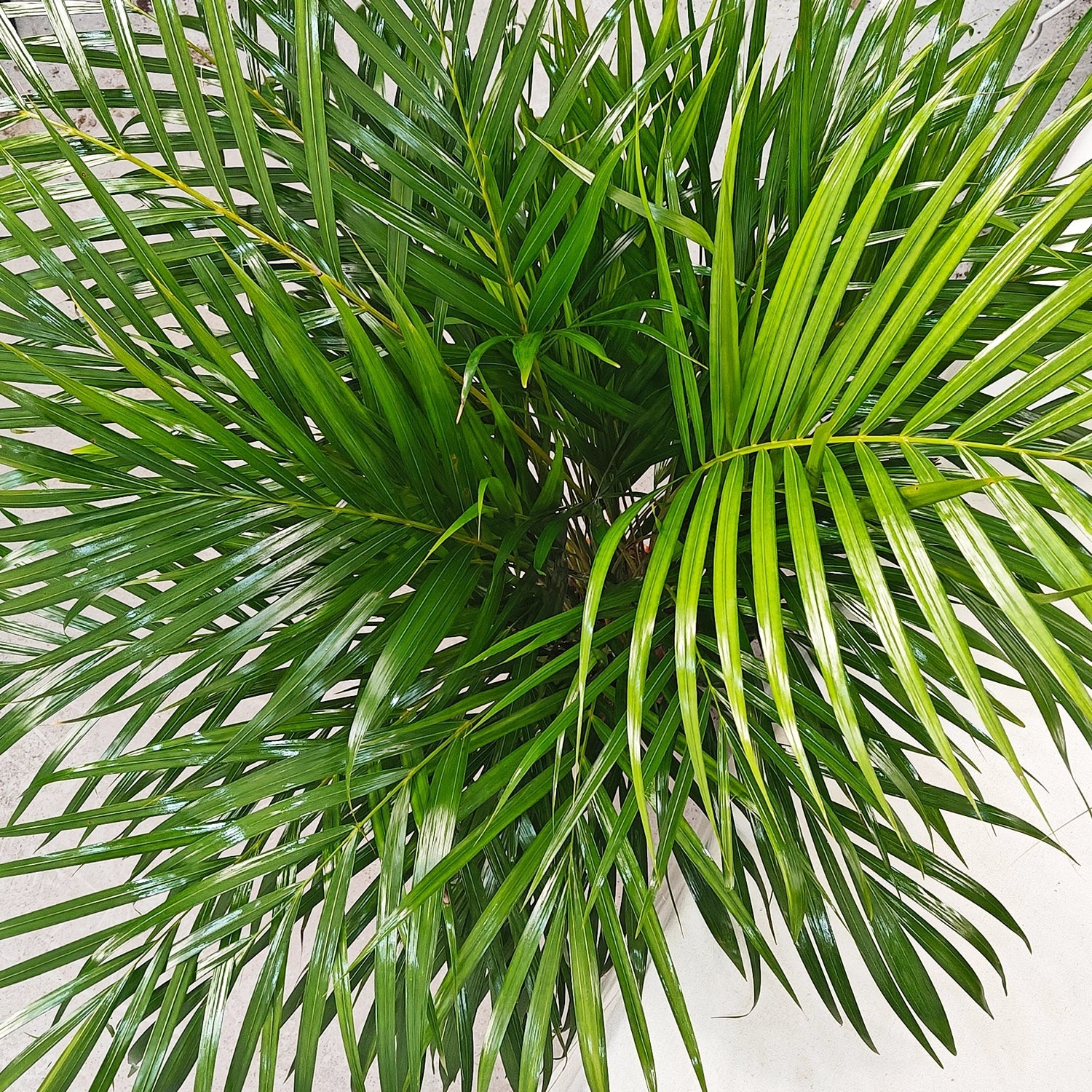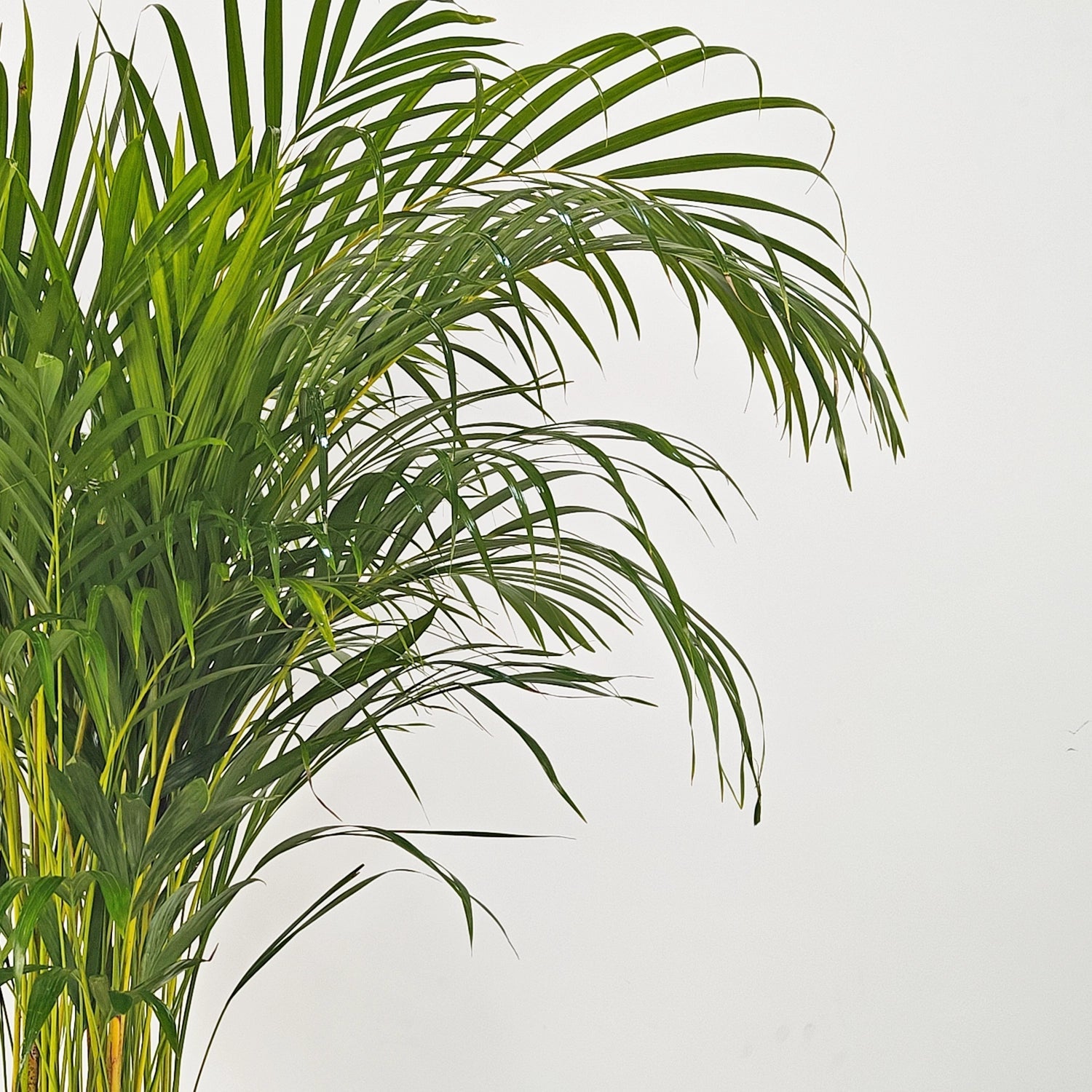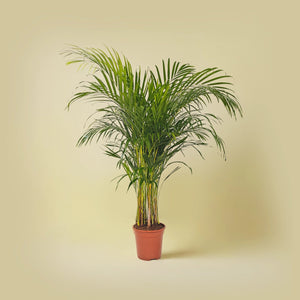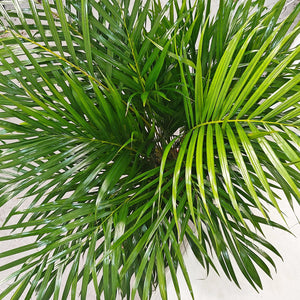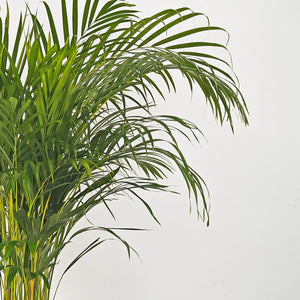نخيل أريكا (كريساليدوكاربس/ديبسيس لوتيسنس) | 1.5 - 2.0 متر
ضمان الخروج الآمن
حصريًا على الموقع - توصيل مجاني في دبي والشارقة
استبدال مجاني إذا تلقيت منتجًا معيبًا أثناء التسليم
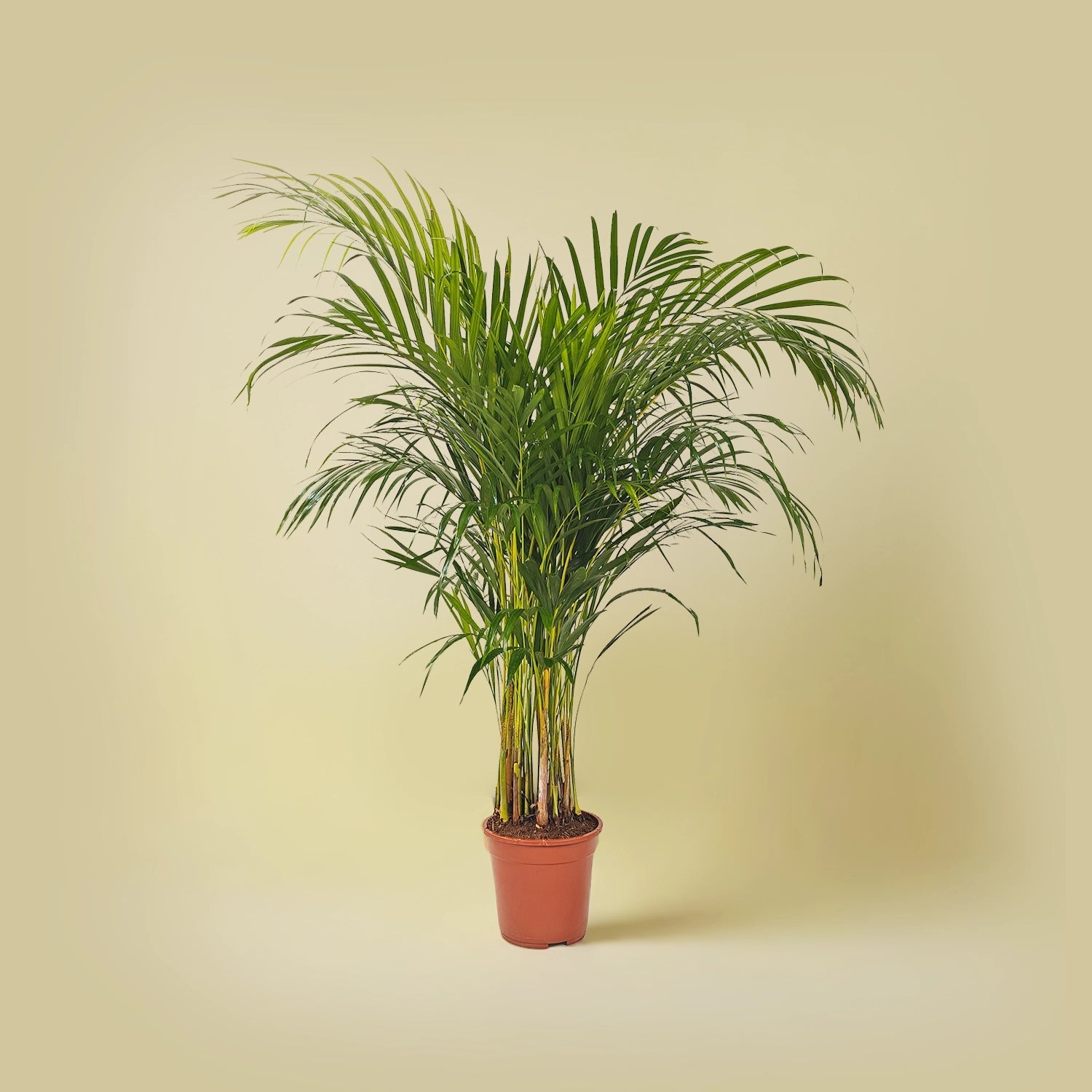
نخيل أريكا (كريساليدوكاربس/ديبسيس لوتيسنس) | 1.5 - 2.0 متر
نخلة الأريكا (Chrysalidocarpus lutescens، والمعروفة أيضًا باسم Dypsis lutescens)، تُعرف أيضًا باسم نخلة الفراشة أو نخلة القصب الذهبي، وهي نبات داخلي شائع بفضل أوراقها الأنيقة والريشية ومظهرها الاستوائي. تتميز بسهولة العناية بها نسبيًا، لكنها تزدهر بشكل أفضل في ظروف خاصة. إليك كيفية العناية بنخلة الأريكا:
ضوء
ضوء ساطع وغير مباشر: تزدهر أشجار نخيل الأريكا في ضوء ساطع وغير مباشر. تتحمل بعض أشعة الشمس المباشرة، ولكن تجنب تعريضها لأشعة الشمس المباشرة لفترات طويلة، فقد تحرق الأوراق.
تحمل الضوء المنخفض: على الرغم من أنها تفضل الضوء الساطع، إلا أن أشجار نخيل أريكا يمكنها تحمل ظروف الضوء المنخفض، على الرغم من أن نموها قد يتباطأ.
الري
الري المعتدل: اسقِ النخلة عندما تشعر بجفاف الطبقة العليا من التربة (١-٢ بوصة). حافظ على رطوبة التربة بشكل متساوٍ، ولكن دون أن تغمرها المياه، لأن الإفراط في الري قد يؤدي إلى تعفن الجذور.
تقليل الري في الشتاء: خلال موسم الخمول، قلل من وتيرة الري لمنع الرطوبة الزائدة.
رطوبة
الرطوبة العالية: تُحب أشجار نخيل الأريكا البيئات الرطبة. إذا كان الهواء جافًا جدًا، خاصةً في الشتاء، رُشّ الأوراق بانتظام أو ضع مُرطّبًا قريبًا للحفاظ على مستويات رطوبة مناسبة.
درجة حرارة
درجات الحرارة الدافئة: حافظ على درجة حرارة تتراوح بين ١٨ و٢٤ درجة مئوية (٦٥-٧٥ درجة فهرنهايت). النبات حساس للتيارات الهوائية الباردة أو التغيرات المفاجئة في درجات الحرارة، لذا تجنب تعريضه لدرجات حرارة أقل من ١٠ درجات مئوية (٥٠ درجة فهرنهايت).
تربة
تربة جيدة التصريف: استخدم تربة جيدة التصريف، مثل تربة النخيل أو النباتات الداخلية. تأكد من وجود فتحات تصريف في الأصيص لمنع تراكم الماء في القاع.
التسميد
التسميد في الربيع والصيف: خلال موسم النمو (الربيع والصيف)، سمّد كل شهرين إلى ثلاثة أشهر بسماد متوازن قابل للذوبان في الماء أو سماد مُخصّص لأشجار النخيل. تجنّب التسميد في الخريف والشتاء.
تشذيب
إزالة الأوراق الميتة أو المصفرة: قم بإزالة أي أوراق بنية أو صفراء لتشجيع نمو صحي وتحسين مظهر النبات. مع ذلك، تجنب قطع الأوراق الخضراء السليمة، فقد يؤدي ذلك إلى إجهاد النبات.
إعادة الزراعة
إعادة زراعة نخيل الأريكا كل سنتين إلى ثلاث سنوات: أعد زراعة نخيل الأريكا كل سنتين إلى ثلاث سنوات لتجديد التربة وإعطاء الجذور مساحة أكبر للنمو. اختر أصيصًا أكبر بقليل من الأصيص الحالي لتجنب مشاكل احتباس الماء.
مكافحة الآفات
انتبه للآفات: قد تجذب أشجار نخيل الأريكا آفات مثل سوس العنكبوت، والبق الدقيقي، والحشرات القشرية. افحص النبات بانتظام وعالج الإصابات بزيت النيم أو الصابون المبيد للحشرات.
سمية
غير سامة: أشجار نخيل أريكا غير سامة للحيوانات الأليفة والبشر، مما يجعلها خيارًا رائعًا للأسر التي لديها حيوانات أو أطفال.
بتوفير ضوء ساطع ورطوبة ثابتة ورطوبة عالية، ستزدهر نخلة أريكا لديك وتضفي على مساحتك لمسةً استوائيةً غنية. سيساعد التقليم المنتظم وإعادة الزراعة من حين لآخر في الحفاظ على صحة النبات وجماله.
قد يختلف المنتج الفعلي في الشكل أو المظهر. ما لم يطلب المشتري وعاءً مختلفًا، فسيتم إرسال النباتات في أوعية بلاستيكية.
على الرغم من أن المواد الموجودة على هذه الصفحة يتم تقديمها بأفضل النوايا، فإننا نتبرأ من أي ضمانات أو تصريحات صريحة أو ضمنية فيما يتعلق بصحة أو كفاية أو صلاحية أو موثوقية أو إمكانية الوصول أو اكتمال أي محتوى على الموقع.
